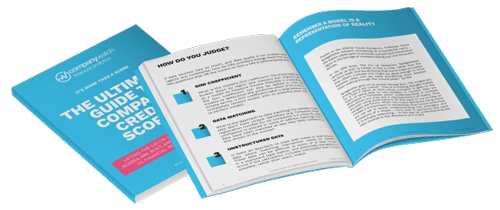How To Do A Competitive Analysis

A competitive analysis is a crucial tool for any business seeking to gain a competitive edge in their chosen industry. By thoroughly examining your competitors' strengths, weaknesses, and strategies, you can identify opportunities to enhance your own business and make more informed decisions.
Company Watch is a valuable tool in the competitive analysis toolkit. We provide comprehensive data on companies, industries, and markets. This allows you to track your competitors' performance and identify key trends.
In this blogpost, we cover:
- What is a competitive analysis?
- Why is a competitive analysis important for business?
- How to do a competitive analysis: 4 key steps
What is a competitive analysis?
A competitive analysis is a strategic tool that involves evaluating your competitors' strengths, weaknesses, opportunities, and threats (SWOT) to gain valuable insights into their market positioning, strategies, and competitive advantages.
A comprehensive competitive analysis involves assessing your competitors' financial health and credit risk, as well their key performance indicators. With relevant insights, it can help you determine how and what changes to your operations would most benefit your business.
Why is a competitive analysis important for business?
A study by McKinsey found that companies that conduct regular competitive analysis are twice as likely to outperform their competitors.
A competitive analysis allows businesses to:
-
Identify potential threats
By understanding your competitors' strengths, you can identify areas where they may have a competitive advantage over your business. This will allow you to take proactive steps to mitigate any threats to your market position.
-
Discover untapped opportunities
By analysing your competitors' weaknesses, you can identify gaps in the market that you can exploit to gain a competitive advantage. If you notice that your competitors are not offering a particular product or service, you may be able to fill that gap and capture a new market.
For instance, consider the case of Netflix, which was founded in 1997 as a mail-order DVD rental service. As technology and internet usage evolved, Netflix adapted its business model to become a leading streaming service. By identifying the shift towards online streaming, Netflix was able to capitalise on a growing market and achieve significant success.
-
Optimise your marketing strategies
By understanding your competitors' marketing strategies, you can tailor your own marketing efforts to be more effective. This is particularly useful during target audience assessments. If you see that your competitors are focusing on a particular target market, you may want to consider targeting a different market segment for greater reach.
How to do a competitive analysis: 4 key steps
Step 1: Identify your key competitors
Determine who your direct and indirect competitors are. This will include businesses that offer similar products or services, target the same customers, or operate in the same geographic area.
These are some best practises to consider during the competitor identification process:
- Conduct relevant Google searches using specialised keywords most relevant to your industry.
- Monitor social media activity - search for relevant industry hashtags and educational content.
- Look through market research reports by organisations like Forrester and Gartner.
- Conduct customer surveys to gauge who they see as your competitors.
Step 2: Gather information about your competitors
There is a range of sources to consider when gathering information on your competitors. Below are a few of the key ones:
- Websites - Analyse their website content, design, and online presence.
- Social media - Monitor their activity on platforms like Facebook, Twitter, and LinkedIn to understand their target audience and marketing strategies.
- Press releases - Keep track of their news and announcements to stay informed about their latest developments.
- Industry reports - Consult industry reports and analysis to gather data on market trends, competitor performance, and financial risk metrics.
- Public records - Access public records to learn about their financial performance, legal filings, and patents.
Gathering information on UK businesses is made easier with Company Watch. Use our platform to conduct director search, look up legal filings, and understand financial performance in an incredibly accessible format.
Particularly, our Data Search feature allows you to filter and refine the entire Companies House database. You can find any businesses operating in a target area by inputting granular queries such as postcode or region.
Step 3: Analyse your competitors against key metrics
Determine the key metrics that are most important to your business and track how your competitors are performing in these areas. This may include factors such as market share, customer satisfaction, financial performance, brand awareness, or innovation.
A key metric to look at is market gaps or competitor weaknesses. These will help you to identify opportunities for your own business to differentiate itself and gain a competitive edge.
For instance, if you notice that your competitors are struggling with customer service, you may be able to improve your own business by providing exceptional customer support. Or, if you see that your competitors are not investing in research and development, you may be able to gain a competitive advantage by developing innovative new products or services.
Step 4: Develop a competitive strategy
Based on your competitive analysis, develop a competitive strategy that will help you to achieve your corporate goals. This may involve improving your product offerings, enhancing your marketing efforts, or reducing your costs.
A successful competitive strategy should incorporate differentiation, cost leadership, focus, innovation, and customer focus. By identifying unique selling points, reducing costs, targeting specific market segments, investing in research and development, and prioritising customer satisfaction, you can effectively position your business for long-term success and growth in competitive markets.
Key takeaways
- A comprehensive competitive analysis allows businesses to identify potential threats, discover untapped opportunities, and optimise marketing strategies.
- A successful competitive analysis involves identifying key competitors, analysing their performance against key metrics, and using this to develop a competitive business strategy.
- Company Watch can help businesses conduct director search, monitor financial risk metrics, and provide business information for a holistic competitive analysis.

